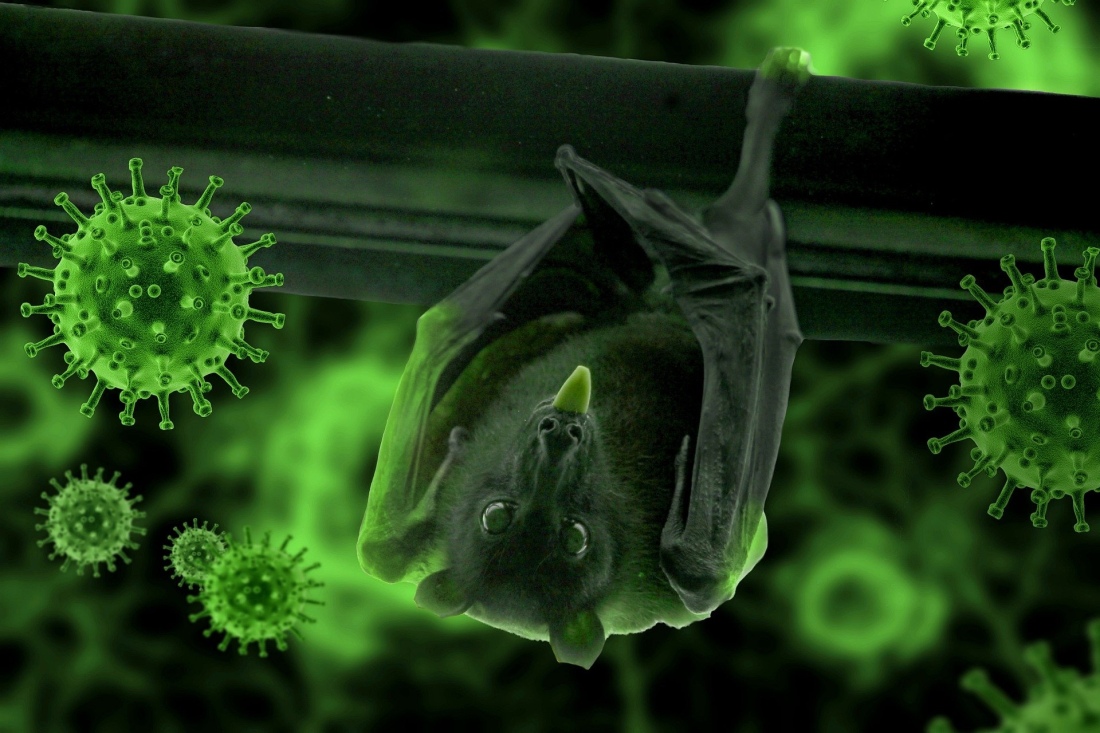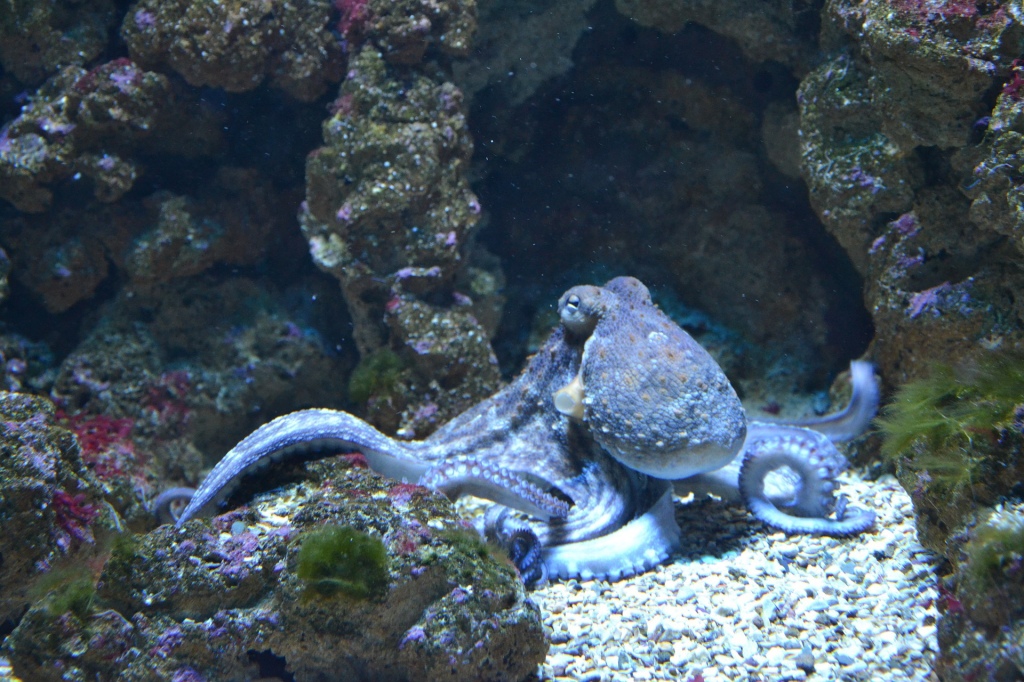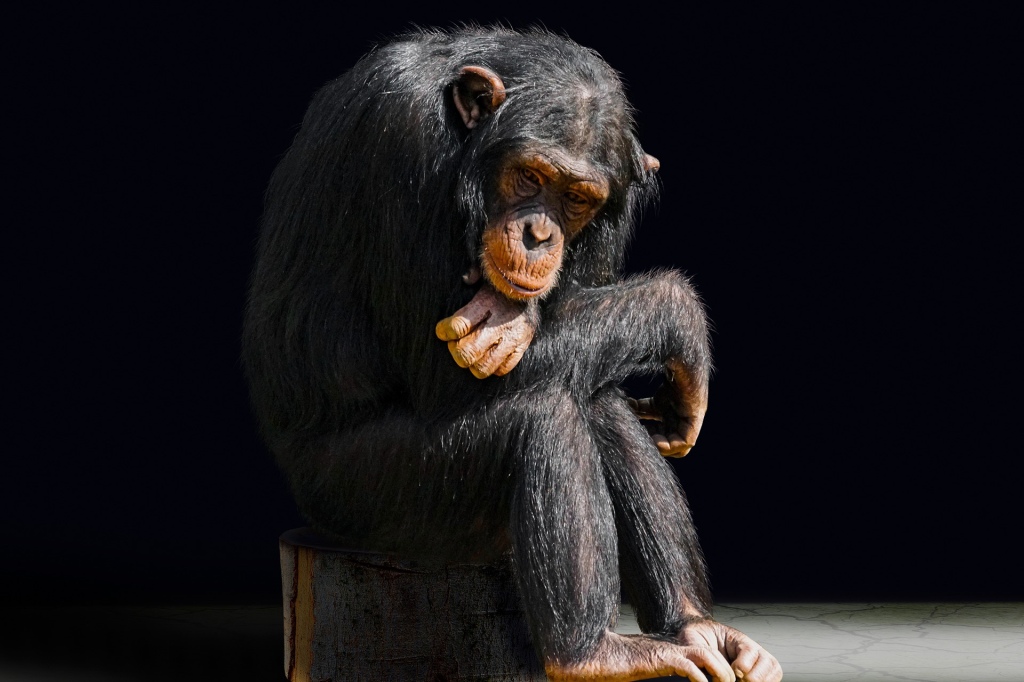By Ricardo Ribas

Viruses are microscopic agents that infect living organisms and cause diseases. They are considered the most abundant biological entity on the planet, existing for over 1.5 billion years. Viruses have both life and non-life properties. They do not have cells and cannot turn food into energy, but have genetic material (either DNA or RNA). Without a host cell, viruses are inert containers of chemicals so they need to infect cells in order to reproduce, evolve and survive. Hosts can be humans, animals, plants, fungi and bacteria. Some viruses are harmless whilst others cause diseases, some of which leading to the death of the host. To date there are no drugs capable of killing viruses so the host is dependent on its own immune system to fight the infection. Nowadays, there are some antiviral drugs capable of inhibiting them from reproducing and developing, as well as vaccines able to prevent infections and control the spread of the disease.
There are many types of viruses, each one adapted to its own host, but at times, viruses can jump and infect different hosts through a process called “spillover”. This can happen as a result of increased contact between different species or due to mutations that allows the viruses to evolve and gain the capacity to spread more efficiency in order to survive and to become more dangerous. In recent years, we have heard more and more about viral diseases able to jump from animals to humans. Here are some examples:
Influeza: The Flu Viruses
In the last century, there have been many examples of flu-like diseases caused by viruses that jumped from animals to humans. Some are caused by influenza viruses, a family responsible for attacking the respiratory system and causing flu like symptoms in humans.
In 1918, a deadly flu-like pandemic (Spanish Flu) appeared and rapidly spread around the world, infecting 500 million people and killing an estimated of 50 million. There is still some controversy about where the virus was originated from since Europe, America and Asia were affected simultaneously, but recent studies tend to agree that the outbreak may have originated in the North of China, either from pigs or from domestic and wild birds.
But there are other more recent examples of influenza viruses that jump species, such as the ones responsible for the outbreaks of swine-flu and bird-flu.
Although pig’s influenza viruses are rarely transmitted to humans and are hardly spread between people, they were responsible for the worldwide outbreak of swine-flu in 2009-2010. The disease was firstly identified in 2009 when many cases of human respiratory illness were reported in Mexico. We now know that this virus is the result of a merge between genetic material from pigs, birds and human viruses. In animals, the disease is responsible for fever, coughing, nose and eyes discharge, sneezing, breathing difficulties and lack of appetite, however, some animals show no signs of illness. Humans show flu like symptoms and can be infected either by close contact with pigs through farming and fairs or by person-to-person contact during sneezing, coughing and by contaminated surfaces. Fortunately, the 2009 outbreak was not as serious as previously anticipated and only a relatively small number of cases lead to serious illnesses and deaths. Swine flu is now considered a normal type of seasonal flu and is included in the vaccination program.
Bird-flu is another infectious type of influenza that spreads among wild and domestic birds. The most common form of the disease is caused by H5N1, a deadly virus for birds. H5N1 was firstly identified in humans in Hong-Kong in 1997. Human cases of the disease were linked with the handling of faeces, nasal and mouth secretions of infected poultry, particularly in farms and markets. Bird symptoms include: sudden death, lack of coordination, purple discoloration of the wattles, combs and legs, misshapen eggs, diarrhoea, nasal discharge, coughing and sneezing. Humans generally suffer from fever, cough, sore throat, muscle ache but the disease can lead to pneumonia. The disease has high mortality rate and is responsible for causing the death of about 60% of those infected. The good news is that H5N1 only rarely infect humans and is not capable to spread from person to person. In spite of this, it is a fast mutating virus and if it gains the capacity to be transmissible between humans while retaining its capacity to cause severe disease, the consequences can be very serious.
Human Immunodeficiency Virus (HIV): one century with humans
Another example of a virus that crossed species is the one responsible for human immunodeficiency. Once infected, the virus attacks the immune system of the host, opening the door for other opportunistic diseases. This disease was first observed in 1981 in the USA, but scientists believe that humans got infected in the 1920’s in West-Central Africa, possibly in what is now the Democratic Republic of Congo. Scientists believe this happened when hunters consumed meat from non-human primates carrying a virus closely related to the HIV (Simian Immunodeficiency Virus or SIV), a virus that also attacks the immune system of these animals. It is suspected that the infection has reached the Caribbean islands in 1960s, New York City in the 1970’s and San Francisco a decade later, when it was finally discovered.
Ebola, the terrifying virus
The Ebola virus was first discovered in 1976 near the Ebola River in the Democratic Republic of Congo. Since then, the virus has been responsible for occasional outbreaks in human and primates in many African countries. Between 1976 and 2013, the world health organisation reported 24 human outbreaks of the disease with 1.600 deaths in total, but the largest outbreak occurred between 2013 and 2016 and was responsible for over 11.000 deaths. The disease is rare but very severe, often causing fever, sore throat, body aches, vomit, diarrhoea and sometimes bleeding inside and outside the body, with death occurring in 50% of the human infected. Scientist think that the Ebola virus may be carried by bats, because these animals don’t die of the disease. It is believed that humans get infected by contact with the infected animal’s body fluids, either directly from bats or during consumption of nonhuman primates. The virus spreads through human-to-human contact and it is also possible via blood or the body fluids of the infected person.
Coronaviruses repeated stories
Recent history also showed us how coronaviruses can jump from animals to cause a large number of human deaths. Coronaviruses are a large family of viruses known to exist for over 10.000 years. Its name derives from the latin word “corona”, that means crown due to the presence of crown-like spikes in their surface.
Coronaviruses are responsible for respiratory and intestinal diseases in mammals and birds, but the symptoms vary according to the host animal and the type of virus. For instance, in chickens, coronavirus attacks the respiratory and urogenital tracts, whilst in dogs, cats, ferret, rabbits, turkeys, pigs and cows the virus tends to affect the animal’s intestine leading to diarrhoea.
Humans, can only be infected by seven types of coronaviruses. Four of these are very common and responsible for mild respiratory infections with symptoms similar to the ones observed with a cold, but the remaining three viruses can lead to serious and sometimes lethal respiratory infections, such as pneumonia. These include the viruses responsible for the Severe Acute Respiratory Syndrome (SARS), the Middle East Respiratory Syndrome (MERS) and the most recent outbreak in China in 2019-2020 (Covid-19).
SARS was first identified in Southern China during the outbreak of the disease in 2003. Scientists believe that bats are the reservoir of the virus and that the disease was transmitted to humans through consumption of civet cats meat infected by the bats. Once in humans, the disease can spread from person to person. By the end of the outbreak, over 8000 people have been infected and approximately 10% of those died (774 people). Fortunately, no cases of SARS have been reported since 2004.
MERS was reported for the first time in 2012 in Saudi Arabia. It is known that the virus was firstly transmitted to humans by dromedary camels in the earlier 2010s, possibly during consumption of camel meat. This virus has also been found in bats and is believed that it may have infected camels in Africa in the 1990s. Even though the possibility of human to human transmission is very low, the mortality of the disease is quite high standing above 35%. So far, MERS killed 858 out of the 2494 reported cases since it appeared in 2012.
Very recently a new outbreak of coronavirus has emerged in Wuhan, China (Covid-19). Similarly to SARS and MERS, this infection is also responsible for severe acute respiratory infection that can lead to severe organ failure, septic shock, blood clots symptoms and eventually death. Since this is a very recent virus, not much is known about it yet. To date scientists haven’t yet identified which animal the reservoir for the virus is, however, it appears that the contamination to humans may have occurred in a wildlife market, possible during consumption of wild animals. Despite the fact that the rate of transmission between humans is high, the mortality rate seems low. Since it’s origin, the disease has spread all over the world.
When human viruses infect animals?
Sometimes viruses can jump the opposite way. There are also examples of human viruses that alter and adapt to infect animals. This is the case of the human respiratory syncytial virus (HRSV) and the human metapneumovirus (HMPV) that have jumped from humans to chimpanzees. It is believed that this has occurred between 1999 and 2006 in West Africa possibly through tourists visiting the area. Whilst these viruses rarely cause severe disease in healthy adult humans, they are responsible for outbreaks of respiratory diseases among African chimpanzees leading to the death of entire populations.
Why are animal-derived outbreaks getting more frequent?
The fast-growing world population and the development of large metropolis are incentives to the expansion of wildlife trade, which favoured diseases to spill over from animals to humans. Additionally, environment and climate changes are shifting animal habitats, altering their life-styles, their geographic locations and their eating habits (who eat whom). Finally, in an era of international travel means that diseases can spread very quickly.
But a question remains. In a world more vulnerable than ever to new animal-borne diseases, what do you think can be done to prevent future outbreaks?
By Ricardo Ribas, Veterinary Doctor, doctorate in veterinary sciences and researcher in the area of oncology in London
Reference Sources
1.Taubenberger JK & Morens, DM. 1918 Influenza: the Mother of All Pandemics. Emerg Infect Dis. 2006 Jan; 12(1): 15–22. doi: 10.3201/
2.Mena I, Nelson MI, Quezada-Monroy F, et al. Origins of the 2009 H1N1 influenza pandemic in swine in Mexico. Elife. 2016;5:e16777. Published 2016 Jun 28. doi:10.7554/eLife.16777
3. Chan PKS. Outbreak of Avian Influenza A(H5N1) Virus Infection in Hong Kong in 1997. Clinical Infectious Diseases, Vol 34, Suppl. 2, 2002, https://doi.org/10.1086/338820
4. Sharp PM & Hahn BH. Origins of HIV and the AIDS Pandemic. Cold Spring Harb Perspect Med. 2011 Sep; 1(1): a006841. doi: 10.1101/cshperspect.a006841
5. Wertheim JO; Chu, DKW et al. A Case for the Ancient Origin of Coronaviruses. J Virol. 2013 Jun; 87(12): 7039–7045. doi: 10.1128/JVI.03273-12
6. Wang LF & Eaton BT. Bats, Civets and the Emergence of SARS. Curr Top Microbiol Immunol. 2007;315:325-44. doi: 10.1007/978-3-540-70962-6_13.
7. Haagmans, BL; Dhahiry SHSA et al., Middle East respiratory syndrome coronavirus in dromedary camels: an outbreak investigation. Lancet Infect Dis. 2014 Feb; 14(2): 140–145. doi: 10.1016/S1473-3099(13)70690-X
8. Kondgen S; Kuhl H et al., Pandemic Human Viruses Cause Decline of Endangered Great Apes. Current Biology 18, 260–264, 2008 Feb. DOI 10.1016/j.cub.2008.01.012
9. Britt, R. 11 (sometimes) deadly diseases that hopped across species. Live Science. Firstly published 2011, updated by Life Science Staff in 2020. https://www.livescience.com/12951-10-infectious-diseases-ebola-plague-influenza.html. Accessed January 2020
10. Virus. Wikipedia, Wikipedia Foundation. https://en.wikipedia.org/wiki/Virus. Accessed January 2020.
11. Spillover infection. Wikipedia, Wikipedia Foundation. https://en.wikipedia.org/wiki/Spillover_infection#cite_note-2. Accessed January 2020.
12. Spanish flu. Wikipedia, Wikipedia Foundation. https://en.wikipedia.org/wiki/Spanish_flu#Hypotheses_about_the_source. Accessed January 2020.
13. 2009 swine flu pandemic. Wikipedia, Wikipedia Foundation. https://en.wikipedia.org/wiki/2009_swine_flu_pandemic#Signs_and_symptoms. Accessed January 2020
14. Influenza A virus subtype H5N1. Wikipedia, Wikipedia Foundation. https://en.wikipedia.org/wiki/Influenza_A_virus_subtype_H5N1#cite_note-:0-21. Accessed January 2020
15. HIV. Wikipedia, Wikipedia Foundation. https://en.wikipedia.org/wiki/HIV#Origins. Accessed January 2020
16. Coronavirus. Wikipedia, Wikipedia Foundation. https://en.wikipedia.org/wiki/Coronavirus. Accessed January 2020
17. Information on Swine/Variant Influenza. Centers for Disease Control and Prevention. https://www.cdc.gov/flu/swineflu/index.htm. Accessed January 2020
18. CDC – NIOSH Publications and Products – Protecting Poultry Workers from Avian Influenza (Bird Flu) (2008-128)”. http://www.cdc.gov.2008. doi:10.26616/NIOSHPUB2008128. Accessed January 2020.
19. Swine Influenza. World Organisation for animal Health. https://www.oie.int/en/animal-health-in-the-world/animal-diseases/Swine-influenza/. Accessed January 2020
20. MERS-CoV Global Summary and risk assessment. World Health Organization. 5 December 2016. www.who.int/emergencies/mers-cov/mers-summary-2016.pdf?ua=1. Accessed January 2020.
21. Ebola virus disease. World Health Organitasion. https://www.who.int/news-room/fact-sheets/detail/ebola-virus-disease. Accessed January 2020
Disclaimer
The subjects and ideas discussed on this article are for informational purposes only. For more information consult a vet or a professional in the area. Whilst every effort is made to make sure the article is accurate at the time of publication, I take no liability for any new developments on the subject as well as any errors or omissions.







